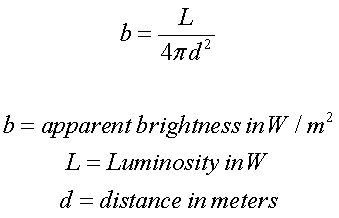The
brightness of an object decreases dramatically
as we move farther from the source. The result is
due to a larger "sphere" of influence. Light from a
source like a
star shines in all directions, to the
area of illumination increases with increasing
distance so the total
brightness thins out.This
is called the Inverse Square Law:

If we know the
distance to a
star, we can use
this equation to determine its
brightness.
Back to Top |

